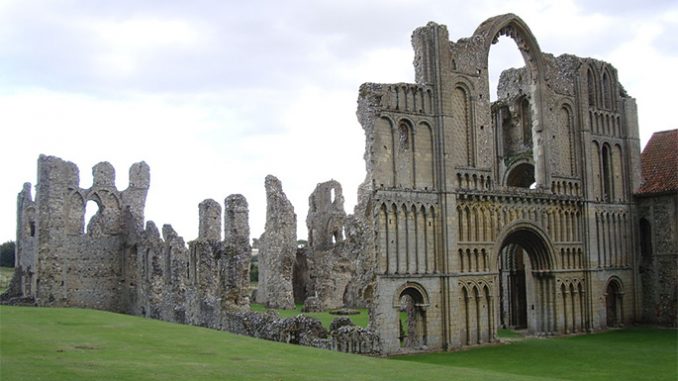
For the past couple of decades, I have been leading Catholic History Walks around London, and loving it. Obviously, a good number of the walkers are Americans, who are either discovering the Walks via my website and just turning up, or through contact beforehand to plan a particular route.
One thing many walkers have in common: at a very early stage of the walk, and often on arrival, they will announce that they are looking forward to it all because they have a particular interest in—and then I wait for the next bit, which rarely varies—St Thomas More. Now, I yield to no one in admiration for this magnificent saint—far and away the best Lord Chancellor we have ever had, and a martyr of heroism and true patriotism. His clear affirmation that he was “the King’s good servant, but God’s first” rings through the centuries and is the best summing-up of a true public servant’s duty and loyalty.
But I have found—and it is beginning to be a bit irritating—a sort of disappointment among visitors from America, that Catholics in Britain are not actively persecuted under 17th-century laws. They’ve seen the movie (yes, I’m referring to “A Man for All Seasons”, which is excellent) and they sort of know the subsequent history. But they somehow do not want to follow the rest of the story: the complicated history with Stuarts and Hanoverians and industry and railways and the Catholic revival and two World Wars and The Beatles and Margaret Thatcher and so on to today.
Britain is not stuck in a time-warp in which we all live in oak-beamed cottages or giant castles and shudder at the news of another round of beheadings on Tower Hill.
Catholics—and all Christians—in Britain do face considerable problems. And these problems are in fact similar to those of the rest of the Western world—notably aggressive opposition to the sane and Christian understanding of men, women, and marriage. We also have a low birthrate, rising pressure from Islam, and concerted attempts to attack our history, culture, and traditions from campaigners nurtured in various forms of Marxism.
But these are today’s problems, and they are not the same as those of the 16th and 17th centuries. A perspective of history is needed.
The story of the Church in Britain did not start with the Tudors and the tragic events of the Reformation. It is much, much older, and it is really impossible to understand the full importance of More’s martyrdom and his message for today unless this is grasped.
There is a particular and specific point about affirming loyalty to Christ and the Church in a land where allegiance to both goes back into the earliest centuries. Part of what More understood was rooted in the depths of the history of Christianity in Britain. We do not know when the Faith first came to our country; we do know that it was when we were part of the Roman Empire—that same Roman Empire into which Christ Himself was born and lived and died and rose again. Our Catholic roots go right back to the days when Christ walked this earth.
In the 18th century, the poet William Blake famously asked about the legend that Christ himself had perhaps visited our country: “And did those feet in ancient time/Walk upon England’s mountains green?” The formal answer is “Well, …since you ask…probably not.” But it is at least theoretically possible that He did walk here. Tin from mines along our western coasts—what we today call Cornwall—was sold across the Roman Empire, and ships certainly visited on trading trips to acquire it. The legend is that Christ came with Joseph of Arimathea (said to be his uncle) on one such trip.
Of course, it was not England then, but Britain (Latin: Britannia). The Romans gave it that name, and we still use it. The invasion of the Anglo-Saxons as the Empire collapsed (the usual date given for the departure of the legions is 410 AD) would eventually give the larger part of the island the name “England”. What is clear is that long before that time, there were certainly a good number of Christians here. There is evidence of bishops from Britannia visiting Rome, and when Augustine and a band of Benedictine monks arrived in AD 597 as missionaries to the Anglo-Saxons, sent by Pope Gregory the Great, they found a number of active Christian communities.
Inevitably, being Catholics, these British Christians argued among themselves and with Augustine, and it was only at the great Synod of Whitby in 654 that agreements were made about monks’ haircuts, the dating of Easter, and other things.
The essential point, however, is that the roots of Christianity in Britain are deep. Oddly, it is Catholics who often seem not to grasp the significance of this fact. Members of other Christian groups often like to emphasize Britain’s long Christian past and even claim many of the saints and heroes—Hilda of Whitby, Paulinus of York, Aidan, Cuthbert, and others—as their own.
Meanwhile, history rolls on. We are now five centuries away from the Tudors. Two popular and successful papal visits to Britain—St John Paul II in 1982 and Pope Benedict XVI in 2010—saw substantial changes in public attitudes towards the papacy. King Charles, as Prince of Wales, attended the canonization of St. John Henry Newman in Rome in 2018 amid a general atmosphere of great goodwill, and a fine essay he wrote about Newman was published jointly in The Times and L’Osservatore Romano. In 2023, our Archbishop of Westminster, Cardinal Vincent Nichols, played a specific role at the King’s coronation. And the rather splendid copes worn by the principal clergy on that occasion all came from our Westminster Cathedral.
In July of this year, the papal nuncio celebrated Mass—with a packed congregation—in Canterbury Cathedral, the history of which goes back to St Augustine landing on that stretch of the Kent coast all those years ago. It was the first such great public Mass there for 500 years, and it was glorious.
None of this means that the conversion of our country is going to happen immediately. But the issues of today are not those of the 16th century. Today’s Anglican Communion has serious problems of its own. And the future will hold all sorts of developments that we think we can foresee, but probably cannot. In the meantime, an authentic perspective on history is useful. The Faith was planted here long, long ago. Our duty remains the same as that of Thomas More and all those who came before him.
At Canterbury Cathedral, we finished by singing that hymn by William Blake, pondering the possibility that Christ Himself did indeed walk on our lovely hills, and pledging that we will not rest until we have “built Jerusalem in England’s green and pleasant land”. The project—and the history—continues.
If you value the news and views Catholic World Report provides, please consider donating to support our efforts. Your contribution will help us continue to make CWR available to all readers worldwide for free, without a subscription. Thank you for your generosity!
Click here for more information on donating to CWR. Click here to sign up for our newsletter.















